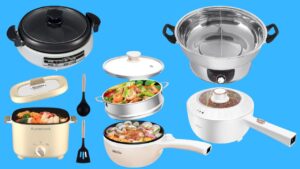Learn how to clean a mattress effectively with our comprehensive guide. Discover step-by-step instructions, essential tips, and best practices to remove stains, eliminate odors, and extend the life of your mattress, ensuring a healthy and comfortable sleep environment.
For good sleep, a clean mattress is necessary and also for overall health. Mattresses accumulate dust, sweat, dead skin cells, and allergens over time, making regular cleaning necessary. This comprehensive guide will walk you through the steps to keep your mattress fresh and hygienic, ensuring you get the best sleep possible.
Table of Contents
1. Introduction
Maintaining a clean mattress is vital for ensuring a healthy and restful sleep environment. A mattress can harbor a variety of contaminants, from dust mites and allergens to stains and odors. Regular cleaning not only extends the life of your mattress but also improves your sleep quality and overall well-being.
2. Why Cleaning Your Mattress Is Important
Your mattress plays a crucial role in your sleep hygiene and health. Here are several reasons why keeping it clean is important:
– **Health:** A dirty mattress can be a breeding ground for dust mites, bacteria, and allergens that can cause respiratory issues, allergies, and skin irritations.
– **Sleep Quality:** A clean mattress promotes better sleep by providing a comfortable and fresh sleeping environment.
– **Longevity:** Regular maintenance can extend the life of your mattress, protecting your investment and ensuring you get the most out of it.
– **Odor Control:** Regular cleaning helps prevent and eliminate unpleasant odors that can disrupt your sleep.
3. How Often Should You Clean Your Mattress?
The frequency of mattress cleaning depends on various factors, including usage, presence of allergies, and personal preferences. As a general guideline:
– **Basic Cleaning:** Vacuum and rotate your mattress every 3-6 months.
– **Deep Cleaning:** Perform a thorough deep cleaning at least twice a year.
– **Spot Cleaning:** Address stains and spills immediately to prevent permanent damage.
4. How to Clean a Mattress: Basic Mattress Maintenance
The basic methods of how to clean mattress are given below:
4.1 Regular Cleaning Routine
A consistent cleaning routine helps maintain your mattress’s cleanliness and prolongs its life. Here’s a basic routine to follow:
1. **Vacuuming:** Use a handheld vacuum or a vacuum with an upholstery attachment to remove dust, hair, and debris from the surface of your mattress.
2. **Rotating and Flipping:** Rotate your mattress 180 degrees every 3-6 months to ensure even wear. If your mattress is double-sided, flip it as well.
3. **Air Out:** Allow your mattress to air out by removing beddings and letting it breathe for a few hours. This helps reduce moisture buildup.
4.2 Preventative Measures
– **Use a Mattress Protector:** A waterproof and hypoallergenic mattress protector can prevent stains, spills, and allergens from penetrating the mattress.
– **Regularly Wash Bedding:** Clean your sheets, pillowcases, and mattress protector weekly to reduce the buildup of dust and sweat.
– **Limit Eating and Drinking in Bed:** Avoid eating or drinking in bed to prevent spills and crumbs from accumulating on your mattress.
5. Deep Cleaning Your Mattress
5.1 Materials and Tools Needed
– Vacuum cleaner with upholstery attachment
– Baking soda
– Mild detergent or enzyme cleaner
– White vinegar
– Hydrogen peroxide
– Clean cloths or sponges
– Spray bottle
– Essential oils (optional)
– Mattress protector (optional)
5.2 Step-by-Step Deep Cleaning Process
1. **Strip the Bed:** Remove all bedding, including sheets, pillowcases, and mattress protector.
2. **Vacuum Thoroughly:** Use the upholstery attachment to vacuum the entire surface of the mattress, focusing on seams and crevices.
3. **Spot Clean Stains:** Identify any stains and treat them accordingly (see section 6 for detailed stain removal techniques).
4. **Deodorize with Baking Soda:** Sprinkle a generous layer of baking soda over the entire surface of the mattress. Let it sit for several hours or overnight to absorb odors.
5. **Vacuum Again:** After the baking soda has sat for a sufficient amount of time, vacuum it up thoroughly.
6. **Air Out the Mattress:** If possible, allow the mattress to air out in a well-ventilated room or outdoors in the sun for a few hours.
7. **Optional – Add Freshness:** For added freshness, mix a few drops of essential oils with water in a spray bottle and lightly mist the mattress.
6. Removing Stains from Your Mattress
6.1 Common Types of Stains and How to Treat Them
– **Sweat Stains:** Mix a solution of hydrogen peroxide, baking soda, and a few drops of liquid dish soap. Spray the solution on the stain, let it sit for an hour, then blot with a clean cloth.
– **Blood Stains:** Use a mixture of cold water and hydrogen peroxide. Apply it to the stain, let it bubble for a few minutes, then blot with a clean cloth. Repeat as needed.
– **Urine Stains:** Mix equal parts white vinegar and water, spray on the stain, blot with a cloth, and sprinkle baking soda over the area. Vacuum once dry.
– **Food and Drink Stains:** Apply a small amount of mild detergent mixed with water to the stain, blot with a cloth, and rinse with a clean damp cloth.
6.2 Natural Cleaning Solutions vs. Commercial Cleaners
Natural cleaning solutions are often safer and more environmentally friendly. Baking soda, white vinegar, and hydrogen peroxide are effective for most stains. Commercial cleaners can be used for tougher stains, but always test a small area first to ensure they do not damage the mattress.
7. Dealing with Odors
7.1 Identifying the Source of Odors
Odors in mattresses can come from various sources, including sweat, urine, food spills, and mold. Identifying the source helps in choosing the right method to eliminate the odor.
7.2 Effective Odor Removal Techniques
– **Baking Soda:** Sprinkle baking soda over the mattress, let it sit for several hours, then vacuum thoroughly.
– **White Vinegar:** Spray a mixture of equal parts white vinegar and water on the mattress, let it air dry, then sprinkle baking soda and vacuum.
– **Essential Oils:** Add a few drops of essential oils to your cleaning solution or baking soda for a pleasant scent.
8. Handling Bed Bugs and Dust Mites
8.1 Identifying Infestations
Signs of bed bugs include small blood stains on sheets, dark spots (bed bug excrement), and a musty odor. Dust mites are microscopic and harder to detect but can cause allergic reactions.
8.2 Treatment Options
– **For Bed Bugs:** Encase the mattress in a bed bug-proof cover, use bed bug sprays, and wash all bedding in hot water.
– **For Dust Mites:** Use a mattress protector, wash bedding regularly in hot water, and vacuum the mattress frequently.
9. Tips for Specific Mattress Types
9.1 Memory Foam
– Avoid using excessive water or harsh chemicals, as they can damage the foam.
– Use a mild detergent and spot clean with a damp cloth.
9.2 Latex
– To dust mites and mold, the latex mattresses are naturally resistant.
– Use a mild detergent and water to spot clean, and ensure the mattress is thoroughly dried.
9.3 Innerspring
– To remove dust and debris, try to vacuum regularly .
– Spot clean stains with mild detergent and water.
9.4 Hybrid
– Follow cleaning instructions for both memory foam and innerspring components.
– To prevent stains and spills, always use a mattress protector .
10. Mattress Protectors and Covers
10.1 Benefits of Using a Mattress Protector
– Protects against spills, stains, and allergens.
– Extends the life of your mattress.
– Easy to remove and clean.
10.2 How to Choose the Right Mattress Protector
– Look for waterproof and hypoallergenic options.
– Ensure it fits your mattress size and type.
– Consider breathable materials for added comfort.
10.3 Cleaning and Maintaining Mattress Protectors
– Wash mattress protectors regularly according to the manufacturer’s instructions.
– Replace protectors that show signs of wear and tear.
11. When to Replace Your Mattress
11.1 Signs It’s Time for a New Mattress
– Sagging or visible wear and tear.
– Reduced comfort and support.
11.2 Extending the Life of Your Mattress
– Use a mattress protector.
– Rotate and flip the mattress regularly.
– Follow a consistent cleaning routine.
12. Eco-Friendly Mattress Cleaning
12.1 Sustainable Cleaning Products
– Look for eco-friendly and biodegradable cleaning products.
– To prevent harm the environment, try to avoid harsh chemicals.
12.2 DIY Eco-Friendly Cleaning Solutions
– Baking soda and vinegar are effective natural cleaners.
– Essential oils add a pleasant scent without harmful chemicals.
13. Frequently Asked Questions
**Q:** How often should I clean my mattress?
**A:** Vacuum and rotate your mattress every 3-6 months, and perform a deep cleaning at least twice a year.
**Q:** Can I use a steam cleaner on my mattress?
**A:** It’s best to avoid steam cleaning as excessive moisture can damage the mattress and promote mold growth.
**Q:** What should I do if my mattress gets wet?
**A:** Blot the area with a clean, dry cloth, use a fan to dry it out, and consider using baking soda to absorb remaining moisture.
**Q:** Are mattress protectors necessary?
**A:** Yes, they protect against stains, spills, and allergens, extending the life of your mattress.
14. Conclusion
Keeping your mattress clean is essential for maintaining a healthy sleep environment and prolonging its life. By following the steps outlined in this guide, you can ensure your mattress remains fresh, comfortable, and hygienic for years to come. Regular maintenance, deep cleaning, and the use of mattress protectors will help you achieve the best possible sleep quality while protecting your investment.



